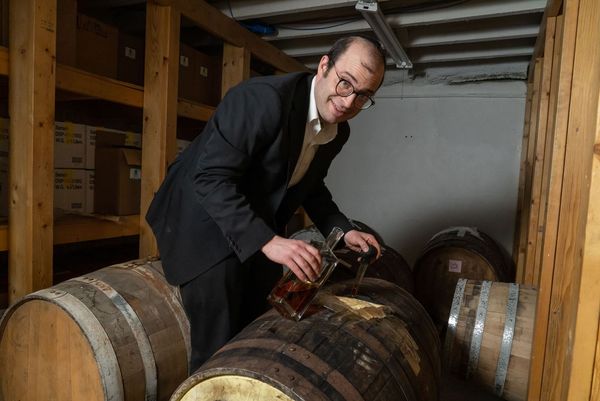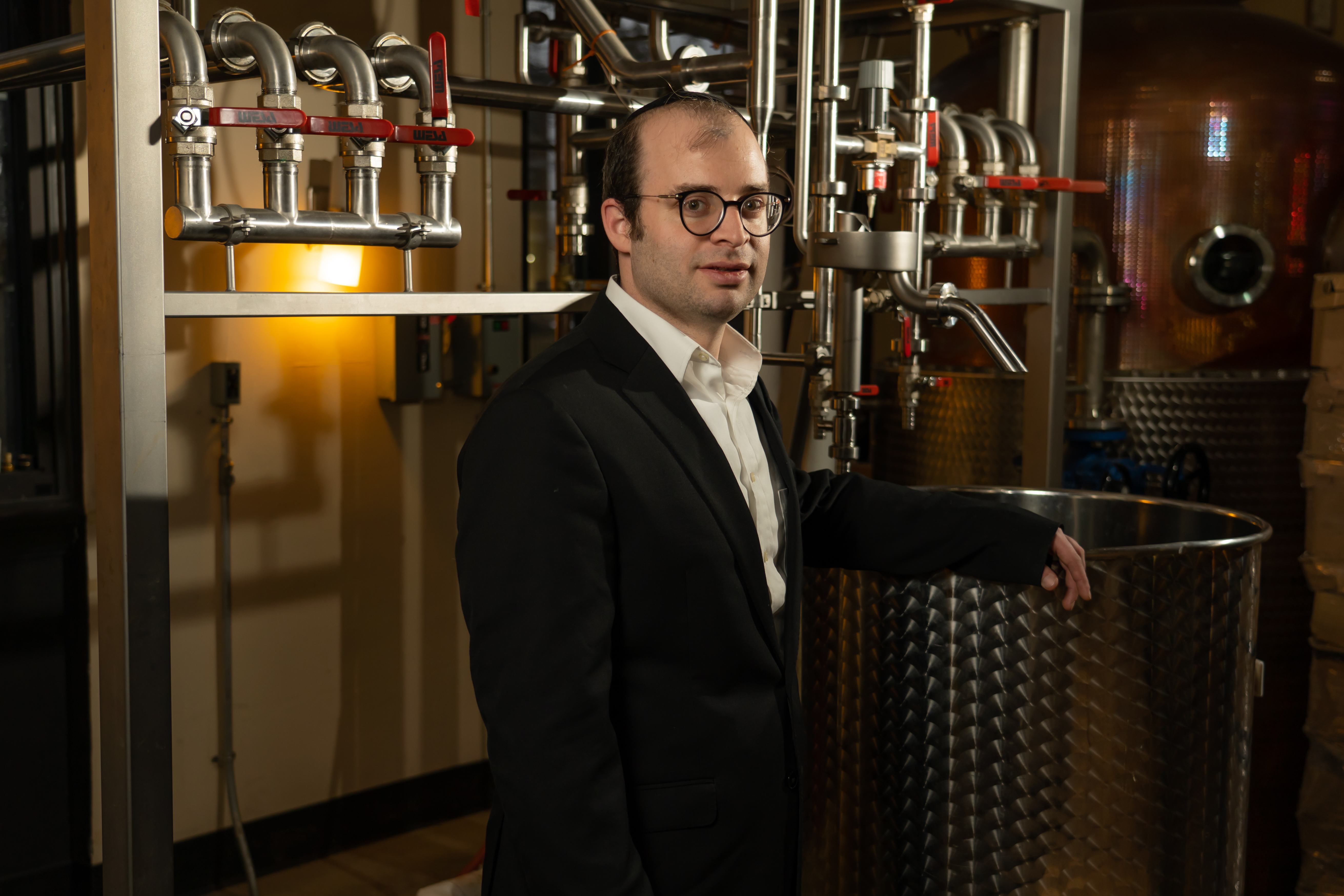
This article is about a fascinating mechanical engineering discovery. We can line up which people will be upset about this article and which people will be happy about it. Women, generally speaking, will be happy about it. Men will be upset with it. Rabbis will be happy about it. Kashrus agencies will be happy about it. Jewish liquor stores will probably be upset with it.
The essence of the article is that we have perhaps been making a huge and incorrect assumption in regard to the sherry casks in which many hard alcohols are aged. There is much more non-kosher wine in the barrels than we had previously thought.
THREE CATEGORIES
But let’s go back to the beginning. There are three categories of scotch whiskeys from the perspective of Kashrus: CERTIFIED, NOT RECOMMENDED, AND APPROVED. Some hard alcohols are certified kosher. Some are “not recommended” and some are “approved.” The OU and the Star K, believe it or not, have some different rulings as to which scotch whiskeys are not recommended and which ones are approved. No kashrus agency makes money off of the latter two categories. They do print the list as a public service.
This author believes that after the mechanical engineering discovery is discussed, many in the kashrus industry might re-think the approved category.
THE BARRELS
The mechanical engineering issue is that in each 220-225 litre barrel that is used to produce scotch whiskeys, there is an average of 12 liters of non-kosher wine that has been absorbed into the barrel itself. The American standard barrel is approximately 53 gallons. The Sherry casks come from Spain and are generally 225-250 liters. By international law and agreement, Sherry and Port may only be produced in Spain.
Barrels are produced in something called “cooperages.” The Macallan distillery in Scotland is considered the Rolls Royce of Scotch whiskey – with whiskeys that range up to $30,000 a bottle. Yes, gulp. (but don’t gulp too much because that averages to $1500 per half ounce gulp.) Macallan is the only distillery that is licensed to purchase significant numbers of barrels from cooperages. They use wood from the Northern Galicia area of Spain and no one else is licensed to make it. Regardless, the Scottish distilleries take apart the barrels and rebuild them to standard sizes. Many, if not most, of the other distilleries also use sherry cask barrels to produce their whiskeys.
This is actually significantly more than the “less than shishim” amount that past poskim have previously assumed was in the barrels. The penetration of liquid into the porous structure of the oak wooden casks is known as impregnation. This author has pictures of 3 entire gallons of wine, taken this morning. These gallons were taken out of “legally empty” 53 gallon barrels.
SOME HALACHIC BACKGROUND
There is a fascinating debate between the Shach (98:13) and the Taz (105:1) regarding the halachic concept of marination or Kavush. If something is marinated in a non-kosher vessel – what is the formula for how much nullification is needed? Do we need 60 times the amount of the kosher food to the entire vessel or do we need sixty times the amount of the “peel of the vessel?” The Shach rules that it is against the entire vessel – even in regard to marination. The Taz rules that only 60 times the volume of the peel is required. Regarding non-kosher wine, however, the Shulchan Aruch (135:13) rules that only 60 times the peel is required.
How does the Shach contend with this ruling? He states (YD 135:33) that the Shulchan Aruch’s ruling is only in regard to a doubt regarding how long the wine was in the barrel. Since non-kosher wine in the post-idolatry world is only a Rabbinic violation, when there is a doubt- one may be lenient. But, the Shach writes, if it is known with certainty that the wine was in the barrel for 24 hours or more then even the Shulchan Aruch rules would rule that one would require 60 times the amount of the entire barrel. The Chochmas Adam (81:11) rules like the Shach and states that only l’tzorech gadol – for a great need, may one be lenient like the Taz’s view. For some reason, however, many of the current Kashrus agencies have been lenient (in terms of their approved list) in accordance with the Taz and not the Shach. But even according to the lenient view, there is still a problem.
THE PROBLEM EVEN ACCORDING TO THE LENIENT VIEW
The Shulchan Aruch (YD 135:13) seems to write that only kdai klipa [a peelable amount of wood] of the wine absorbs into the barrel. But the assumption that this is an insignificant amount made by the Kashrus agencies is questionable. Kdai Klipa is when the “peel” remains intact when taken off. This author believes that when dealing with wood, the “kdai Klipa” is much thicker than when dealing with metal. Especially in this case, where we actually see the previously absorbed wine physically come out. So the bliyos (absorptions) of wine would not be batel (nullified) into the whiskey. This is especially true since the wine is placed in there to add taste.
According to an article in Applied Thermal Engineering Vol. XXV (pp. 709–718) published in 2005, depending upon the porosity of the wood, the impregnation front stops at between the first 4 and 5mm into the inner side in oak casks with 25mm thick staves. But it can and does also absorb further into the other 21 inches too. The article gives a mathematical calculation as to how much absorbs into the wood – and it is quite significant. But there is another problem too.
“SLOSHING”
Many of the smaller distilleries also do something that is illegal called “sloshing.” Sloshing means that they actually add in a few bottles wine in an empty barrel or in a bourbon barrel until the wine gets impregnated into the barrel. The wine gets impregnated after sloshing. The law is that you cannot add more than 2.5 percent of an outside alcohol, but after it gets absorbed, it is empty anyway, so no one can tell.
A DEBATABLE LENIENCY – 16.6% Vs. 1.66%
There is another halachic issue that many have employed as a leniency, but this too is questionable. The Shulchan Aruch (YD 134:5) writes that when non-kosher wine falls into water, the non-kosher wine is pogem the water (makes it taste bad) and one only requires biul b’shais – 1/6th and not 1/60th. Many, such as the Shach (134:21 and see Nekudas HaKesef in Siman 114) are of the view, however, that this is only in regard to water – but not when dealing with another liquid where the wine actually enhances the flavor. Where the wine enhances the flavor, they write that 1/60th is required. This is in accordance with the Ramah (YD 114:4) who requires shishim when wine is mixed with apple juice. The TaZ (114:4) disagrees and states that we only need bitul in 16.6%. How does the TaZ deal with the Ramah in 114:4? He writes that it is simply a quote of the Mordechai’s view who always requires 1.66% and not 16.6 percent.
Rav Moshe Feinstein zt”l (Igros Moshe YD #1 Siman 62) ruled like the TaZ, but said that a Baal Nefesh – someone concerned about his soul, should be stringent and follow the view that 1.66% is required. [Rav Feinstein also discussed the possibility that the view of teh Nekudas HaKeseph may be stringent only in the case where the other liquid is not sharp. But if it is sharp, then even the Nekudas HaKesef may be lenient up to 16.6 perecent.]
THE SOLUTION
Essentially, what we need to do (and this is why the liquor stores aren’t going to be too happy with this article) is to work our way to only purchase tequilas and whiskeys produced under reliable supervision. Ben Terebelo, a Master Distiller based in New York State, explains that the Star K is so vigilant in regard to the provenance of oak casks and barrels that he must provide full documentation as to its origin. His line of artisanal New York bourbons, has finishes of tequila, fresh-fill Cabernet, and fresh-fill Pinoit Noir which would all require rigorous supervision. (This author tasted the entire line of Terebelo bourbons and found them to be superb, but his family said to reserve judgement until his son from Monsey arrives for Shabbos to hear his more expert view.)
“Ben Terebelo is a hands-on Master Distiller, he doesn’t just bottle it by someone else or send emissaries to move the barrels,” remarks Rabbi Tzvi Shaul Goldberg, Kashrus Administrator of the Star-K. “In guidance with the Star-K he does it all himself to ensure the absolute kashrus integrity of the barrels, something that is critical nowadays.”

DEBATE ABOUT THE LESS THAN 1.67 PERCENT
There is a debate between the Rashba and the Noda BiYehuda of which most people are unaware. It pertains to the issue of Bitul B’Shishim, something becoming nullified in a 60 to 1 ratio.
The debate can be called, “Ikro Kach” and it refers to an item where it is normally part of the process of production. If this is the case, the concept of bitul of the non-kosher ingredient does not apply according to the Rashba. The Noda BiYehuda (Mahadura Tanina #56), however permits it.
What do we do? The custom is to follow the Rashba (See Bais Yoseph YD 134 and Mogain Avrohom OC 446) when we have a kosher infrastructure in place, but when we are new to an area, we follow the lenient view of the Noda BiYehudah (Melamed L’ho’il Vol. II #29).
Many people used to rely on the Noda BiYehudah’s view in the 1940’s and 1950’s. Nowadays, however, we no longer rely on this view because we consider the United States as an area where we have an infrastructure. (This question was posed to the gedolim of Europe by Rav Geffen of Atlanta Georgia in regard to Coke. This author discussed the issue and the Melamed L’hoil with Rav Yisroel Belsky zt”l in the late 1980’s – who said back then that America is considered as having an infrastructure.) Few people rely on the Noda BiYehudah’s view in the United States nowadays, except perhaps in regard to non-kosher wine casks.
THIS IS MUCH WORSE
The debate until now centered around the kashrus of placing something non-kosher that is less than shisshim. Here, however, there is more than shishim in the sherry casks.
There are enough whiskeys and tequilas out there that are, in fact, supervised. It is this author’s view that we should consider ourselves as having an infrastructure. It would also be a benefit for our communities to let go of this leniency. It will also put more pressure on the companies to seek truly kosher supervision. This is, of course, the author’s suggestion and should be a question that is posed to our own shul Rabbonim, Poskim, and Kashrus agencies.
As reported by Vos Iz Neias
